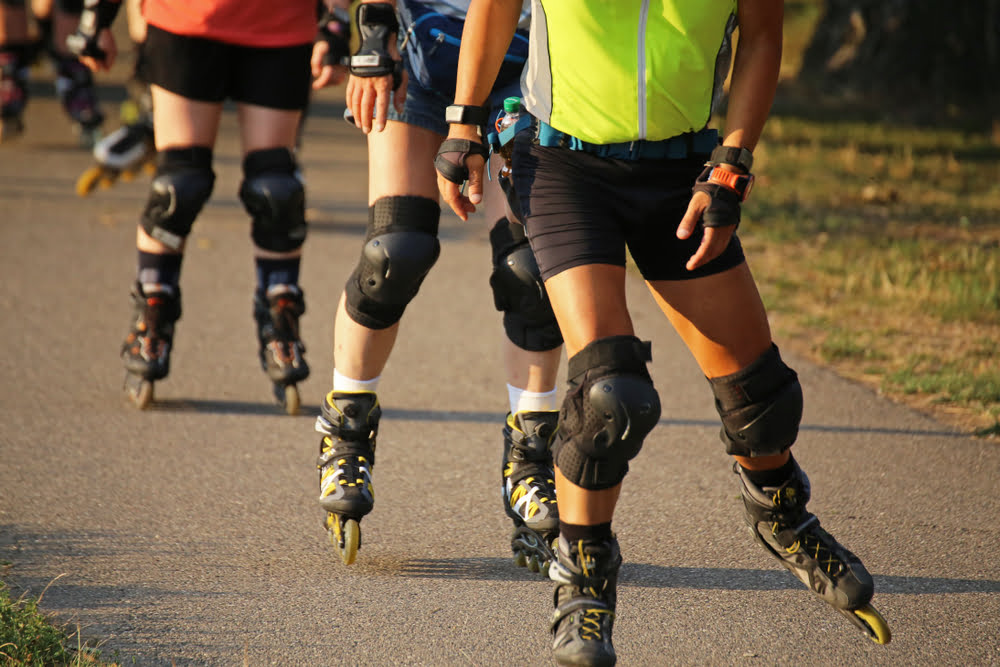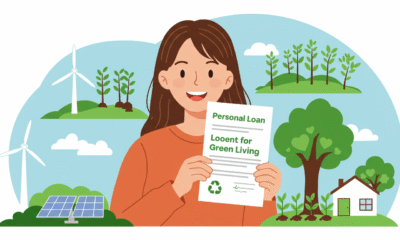

Features
One of the Most Unique Eco-Friendly Travel Tips: Try Rollerblading
Inside Climate News recently released a report on some of the concerns about warming weather aggregators. Scientists are trying to better understand their impact. Either way, we as citizens need to do more to lower our carbon footprints.
As we the climate crisis escalates, public consciousness about climate change is stronger than ever. Finding alternative eco-friendly ways to travel is one of the key everyday things we can do to reduce the amount of carbon in the atmosphere.
Every year, approximately 4.6 tons of carbon dioxide are pushed into the atmosphere from the average passenger vehicle. But there are many green alternatives for you to consider.
Bicycles are very popular but can be a hassle to lock up or commute with due to their size. Rollerblading is an underrated alternative, which many overlook. Inline skates come as 3-wheel rollerblades or 4-wheel rollerblades.
In this brief article, we outline how rollerblades can positively impact the environment.
How Rollerblades Impact the Environment
The demand for eco-friendly manufacturing in the rollerblading industry is very strong. Leading brands such as Rollerblade or K2, increasingly view environmental friendliness as a key unique selling point to their products. Leading brands enhance product sustainability by using low-carbon and recyclable materials in the production of skates.
Rollerblading offers everyone an easy way to reduce their carbon footprint.
Rollerblades can be used to commute to work, get around town, play hockey in the off-season, or participate in group fitness activities. They provide an easy and affordable means of green transport.
Below we explore some of how rollerblades positively impact the environment.
No Carbon Emission to the Environment
Automated vehicles such as cars, buses, and airplanes release carbon into the atmosphere through the fumes generated from burning fossil fuels. The increase in carbon in the atmosphere is identified by scientists as one of the leading causes of climate change, and the rise of extreme weather events across the globe.
A great benefit of rollerblades is that they don’t require gasoline to move. Approximately three-quarters of Americans who commute to an office use a car. Rollerblades offer a brilliant alternative, especially for city dwellers. They offer a speedy commute, traffic avoidance, and zero carbon emissions.
Eco-Friendly Materials
In recent years, rollerblading companies such as Rollerblade and K2 have met the consumer demand for increased sustainability in the design and manufacturing of inline skates.
For example, the K2 brand uses sustainable bamboo in the construction of skate frames. A naturally sourced product, K2’s bamboo is sourced from sustainable projects where the ecosystem is maintained. Bamboo is fast-growing and will decompose back into the environment after use.
Bamboo is proven to transfer energy faster than aluminum due to the fine fiber material construction. The material is durable and light and can well absorb vibrations from surfaces, guaranteeing a smooth roll.
Brands are also aware of limiting the use of single-use plastic in the design of rollerblades.
The skate’s uppers are constructed from polyethylene terephthalate (PET). This material is very eco-friendly, as it is made from the waste of plastic bottles. Many brands will also make liners and laces that are 100% PET, though this can vary and is often linked to the product price point.
Sustainable Packaging
Packaging is another way that leading rollerblading brands improve their sustainability record.
Popular brand Rollerblade transitioned away from plastic packaging to packaging made from recycled paper. As Rollerblade has a distribution network across 22 countries, the shift away from plastic significantly reduced their carbon emissions.
K2 is also committed to using recycled cardboard for the packaging and distribution of all its products. The K2 branding on the cardboard is also made from sustainable ink, made from soya. Additionally, K2 is looking to offer customers a return scheme that allows them to recycle their skates once they’ve finished using them. You can follow the website for developments on this program.
How to Recycle Your Inline Skates
Due to the limited skate recycling schemes, below are some suggestions for how you should dissemble your skates in an eco-friendly way.
- Firstly, remove all the parts that are metal and recycle them normally;
- Next, recycle the wheels on your luggage or improvised devices;
- Remove the plastic cuffs from the skates and put them in your local recycling plant;
- Give the Uppers to a Nike shop so they can be shredded;
- If you don’t want to dissemble and your skates work well, you can donate your skates to a charity shop or a school so that they can continue to be used.
Final Words
Rollerblading is not simply a fun, healthy activity. It could be your way of reducing your carbon footprint by using inline skates as an alternative to using a fossil fuel-burning vehicle.
Improvements in technology and increasingly eco-friendly consumers have led leading rollerblading brands to focus on using sustainable materials in the design, manufacturing, and distribution of rollerblades. You can feel reassured that the process of constructing an inline skate uses minimal carbon.
Finally, rollerblade materials are recyclable, and the skates can also be reused to ensure they provide long-lasting enjoyment. Rollerblading could just be the way you reduce your carbon footprint and help Mother Earth.


 Environment10 months ago
Environment10 months agoAre Polymer Banknotes: an Eco-Friendly Trend or a Groundswell?

 Environment11 months ago
Environment11 months agoEco-Friendly Home Improvements: Top 7 Upgrades for 2025

 Features9 months ago
Features9 months agoEco-Friendly Cryptocurrencies: Sustainable Investment Choices

 Features10 months ago
Features10 months agoEco-Friendly Crypto Traders Must Find the Right Exchange




























